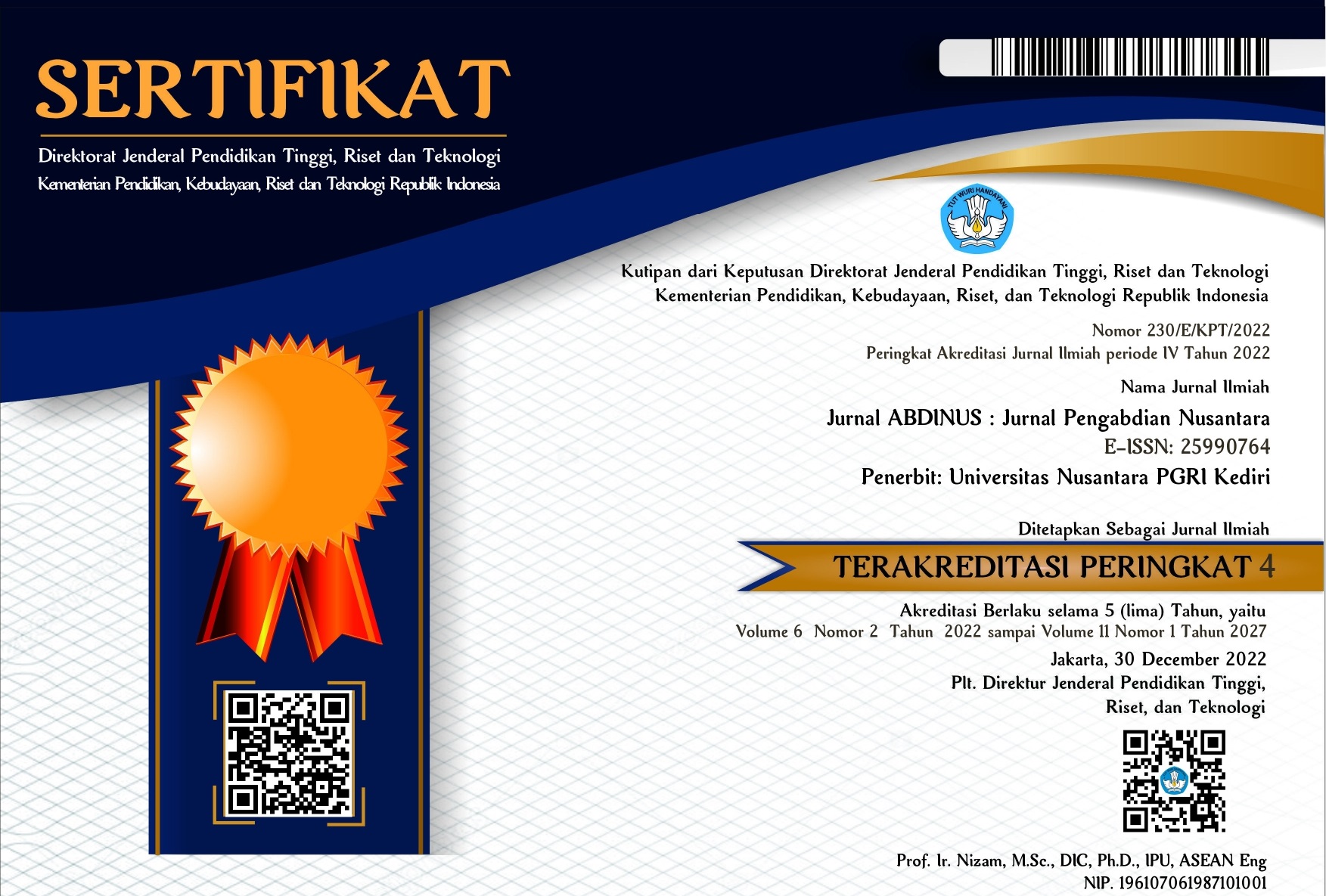Program Pemulihan Pariwisata Jembatan dan Wisata Mangrov Desa Niranusa Kecamatan Maurole Kabupaten Ende
DOI:
https://doi.org/10.29407/ja.v5i2.16296Keywords:
Bridge, Ecotourism, Mangrove tourism, NiranusaAbstract
Niranusa Village is one of the villages in the Ende Regency area that has beautiful natural conditions, one of which is a bridge and mangrove tourism. Niranusa Village has an interesting natural charm. In addition to having white sand beaches, in some parts of the beach in Niranusa has been overgrown by mangroves naturally. The concept of tourism that becomes potential in this village is ecotourism. The lotus storm that hit the East Nusa Tenggara and Abrasion areas also affected the coastal area of Niranusa Village causing damage to bridge ecotourism and mangrove tourism. The purpose of this activity is the process of breeding bridge ecotourism and mangrove tourism in Niranusa village. The process of restoring bridge ecotourism and mangrove tourism consists of planning, implementation and evaluation stages. The work carried out for 27 days restored tourism to around 80% of the target and overall it can be used as a tourist spot for Niranusa.
Downloads
References
Arsad, E. (2015). TEKNOLOGI PENGOLAHAN DAN MANFAAT BAMBU. Jurnal Riset Industri Hasil Hutan, 7(1), 45. https://doi.org/10.24111/jrihh.v7i1.856
Bare, Y., Putra, S. H. J., Bunga, Y. N., & Mago, O. Y. T. (2021). Implementasi Biology Club I di SMA Karitas Watuneso, Kecamatan Lio Timur, Kabupaten Ende. 4(2), 8.
Bare, Y., & Sari, D. R. T. (2021). Pengembangan Lembar Kerja Mahasiswa (LKM) Berbasis Inkuiri Pada Materi Interaksi Molekuler. BioEdUIN, 11(1), 8. https://doi.org/10.15575/bioeduin.v11i1.12077
Butarbutar, R., & Soemarno. (2013). Environmental Effects Of Ecotourism In Indonesia. Journal of Indonesian Tourism and Development Studies, 1(3), 97–107. https://doi.org/10.21776/ub.jitode.2013.001.03.01
Chiutsi, S., Mukoroverwa, M., Karigambe, P., & Mudzengi, B. K. (2011). The theory and practice of ecotourism in Southern Africa. Journal of Hospitality Management and Tourism, 2(2), 8. http:// academicjournals.org/JHMT
Coetzer, K. L., Witkowski, E. T. F., & Erasmus, B. F. N. (2014). Reviewing Biosphere Reserves globally: Effective conservation action or bureaucratic label? Biological Reviews, 89(1), 82–104. https://doi.org/10.1111/brv.12044
Hartanti, G. (2010). Keberadaan Material Bambu sebagai Subtitusi Material Kayu pada Penerapan Desain Interior dan Arsitektur. Humaniora, 1(1), 11. https://doi.org/10.21512/humaniora.v1i1.2143
Mondino, E., & Beery, T. (2019). Ecotourism as a learning tool for sustainable development. The case of Monviso Transboundary Biosphere Reserve, Italy. Journal of Ecotourism, 18(2), 107–121. https://doi.org/10.1080/14724049.2018.1462371
Sangpikul, A. (2017). Ecotourism Impacts on the Economy, Society and Environment of Thailand. Journal of Reviews on Global Economics, 6, 302–312. https://doi.org/10.6000/1929-7092.2017.06.30
Sizi, Y., Bare, Y., & Galis, R. (2021). Pengaruh Model Pembelajaran Kooperatif Tipe Talking Stick Terhadap Keaktifan dan Hasil Belajar Kognitif Peserta Didik SMP Kelas VIII. Spizaetus: Jurnal Biologi dan Pendidikan Biologi, 2(1), 8.
Stronza, A. (2007). The Economic Promise of Ecotourism for Conservation. Journal of Ecotourism, 6(3), 210–230. https://doi.org/10.2167/joe177.0















